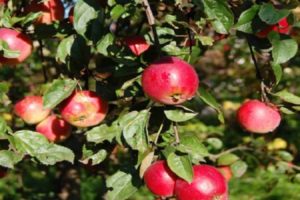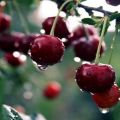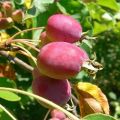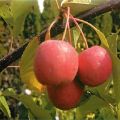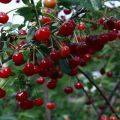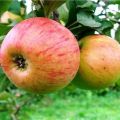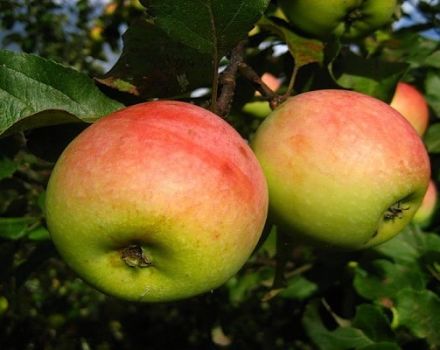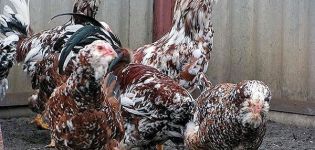Description and characteristics of the Modi apple tree, yield, planting and care
The apple tree is the main decoration of any orchard or summer cottage. All varieties of this tree differ in quality characteristics, indicators and characteristics of fruiting. The Modi apple variety has many features that set it apart from others. Let's consider the advantages and nuances of care in more detail.
The history of breeding the winter variety Modi
This variety was obtained not so long ago. It was bred by Italian breeders in 1982 by crossing two varieties - Gala and Liberty. Despite this, the variety has already actively spread throughout Europe.
Advantages and disadvantages
The tree is distinguished by high yield, good transportability, long shelf life of fruits, as well as resistance to cold weather. In addition, the variety resists many fungal diseases and various pests. There are no disadvantages.
External indicators of culture
A high-yielding robust variety has a host of external characteristics that significantly distinguish the tree from other varieties.
Dimensions of an adult tree
The tree is medium in size with a spherical and compact crown.

Branching of the root system
In this variety, the root system is not particularly branched, but has a compact structure and is located closer to the surface.
Annual growth
The branches of the main skeleton increase annually, as a rule, by 6-8 centimeters.
Features of the crop
This variety is characterized by annual fruiting, which does not interrupt even in adverse weather conditions.
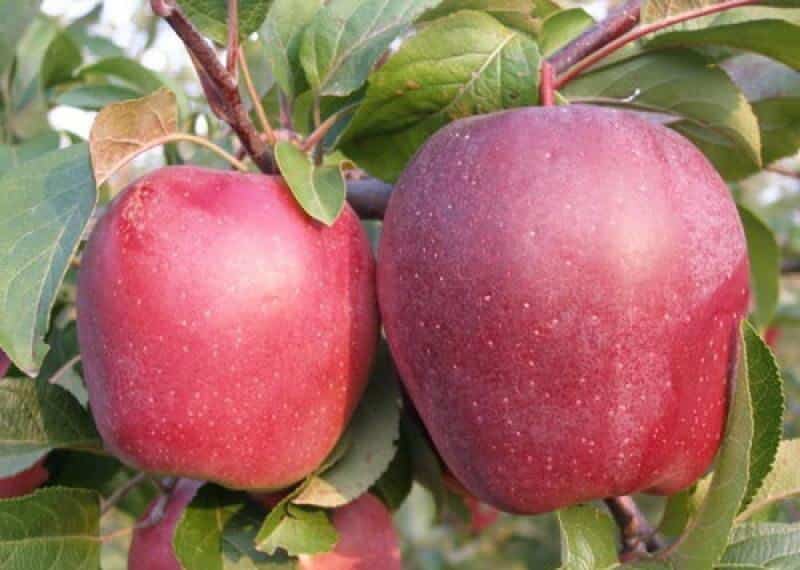
When to wait for the first fruiting
A full harvest can be obtained in 2 years, but the first fruits should be expected already next summer.
Pollinators varieties
The tree belongs to self-fertile apple trees. The best pollinators for this variety are Gala, Fuji and Golden Delicious apple trees.
Flowering and ripening of apples
Mid-late flowering is noted. Moreover, the flowers are frost-resistant, the ovary is good. Apples ripen by September and bloom in May.
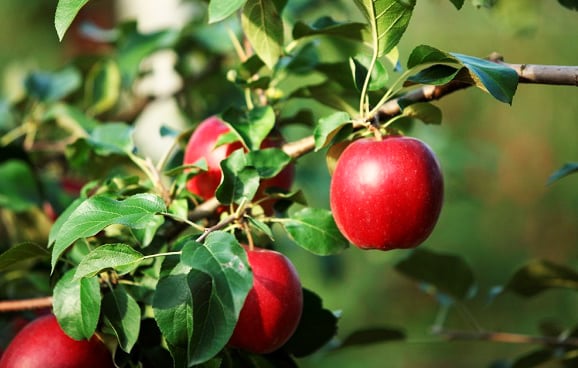
Productivity and taste
From one apple tree of this variety, a gardener can get at least 50 kilograms of ripe fruits. Fruits of medium size, regular elongated shape.
Collection and application
Fruit picking can be delayed until mid-October, but apples tolerate storage well. The harvested crop can be used commercially.
The frequency of fruiting
The Modi apple tree has an important feature - annual fruiting.

Culture Specification
To obtain a bountiful harvest and annual fruiting, you should know the technical characteristics of this crop.
Recommended growing areas
This variety can be grown even in regions with short summers. The most preferred areas: Moscow region, Krasnodar region and regions of Ukraine.
Resistant to freezing temperatures and droughts
The apple tree is resistant to the influence of low temperatures, both in winter and during spring frosts. And also the kidneys are able to wake up quickly after winter sleep.

Immunity to scab and other diseases
The Modi variety is distinguished by increased immunity against scab and many other fungal diseases. Also, the apple tree is resistant to aphids and powdery mildew.
How to plant and care for seedlings
Without proper attention and care, this type of fruit tree will not provide the owner with a high yield annually.
Selection and preparation of seedlings
When choosing a seedling, you should pay attention to the root system: it should be free of damage and signs of deterioration. During transportation, the seedling must be in moistened peat. Then you should shorten the skeletal roots: remove the rotten roots of a dark color. It is also worth noting that it is recommended to keep the tree in water two days before planting.

Optimal location and soil composition
The most suitable place is the sunny side, where there will be no shady areas. The tree will develop well and grow on black earth, meadow or loamy soil. Sandy soil will not work for this variety.
Disembarkation scheme and timing
The disembarkation date is adjusted according to weather conditions. As a rule, this period falls on the first half of spring or autumn (before the first frost appears).
Further care of young apple trees
After planting a fruit seedling, you should take care of the trunk circle. For better oxygen supply to the root system, it is necessary to remove weeds, and also to loosen the distance near the tree by 30-40 centimeters. In the absence of dry weather, a young seedling is watered in April, then in May and August. And also in the first month, you will need to make a top dressing, which includes superphosphate and potassium chloride.
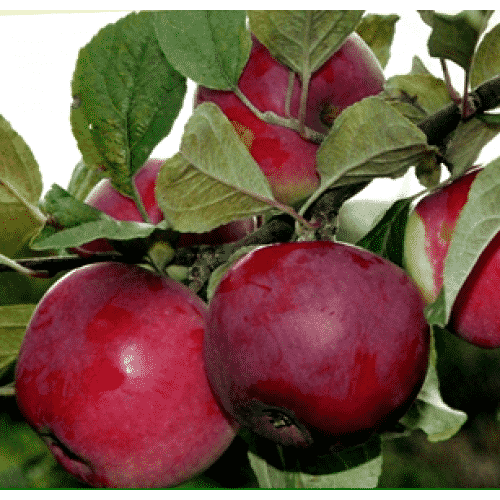
Agricultural technology and growing an adult tree
Agrotechnical measures are necessary for the active growth and development of a healthy tree.
Irrigation regularity
In especially dry periods of the year, it is necessary to resort to watering the tree twice a week. An adult apple tree will need 4 buckets of water. With prolonged drought, an increase in the frequency of watering is allowed.
Fertilizer
Immediately after planting, it is necessary to apply a fertilizer mixture that includes nitrogen. In the summer season, the tree will need top dressing, which contains potassium and phosphorus. The next feeding is carried out after the buds appear. Organic and mineral compounds are used.
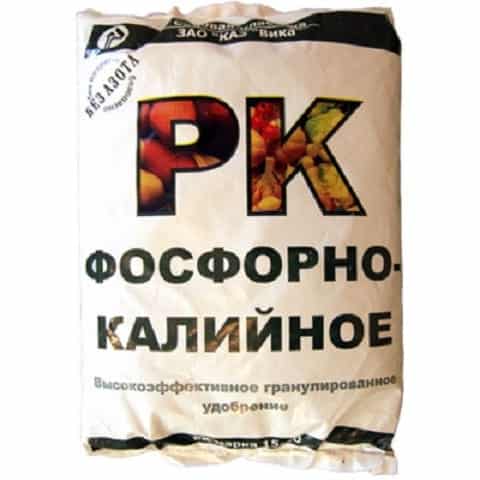
Crown molding
The apple tree will need the first pruning immediately after planting. So, you should shorten the branches by 1/3 part. Each subsequent trimming is carried out as needed.After harvesting, damaged and weak branches are removed, and the cuts are processed with var.
Seasonal insect and infection control
As a rule, the fruit tree is treated with a solution of ferrous sulfate. This is required to protect the tree from pests and diseases.
Also in this case, the time of the procedure matters.
The first treatment is carried out in early spring, when the buds have not yet begun to swell, and the temperature is at least 5 degrees. Also during this period, attention is paid to the bark of the tree, where some pests could hibernate.
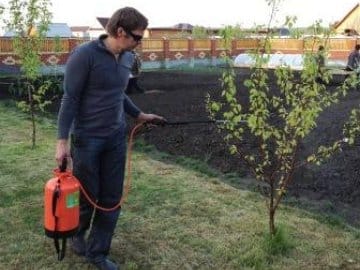
The next treatment is carried out during flowering, then - after the tree has faded. And the last spraying is required in the fall.
Covering for the winter
Some time after harvesting, the soil around the fruit tree must be carefully dug up, the environment must be cleared of leaves and other debris. Then you should water the near-trunk circle and add fertilizer mixtures. In order to protect the trunk, roofing material is often used. In order to help the tree overwinter, urea or iron vitriol is used, and the trunk is covered with lime with a fungicidal solution.
